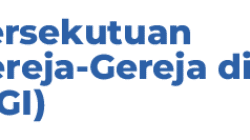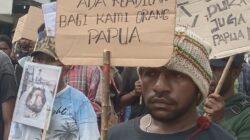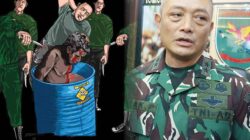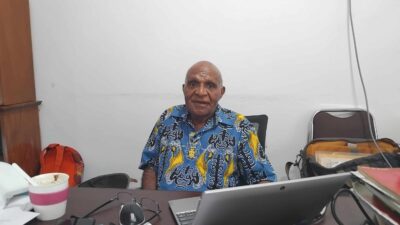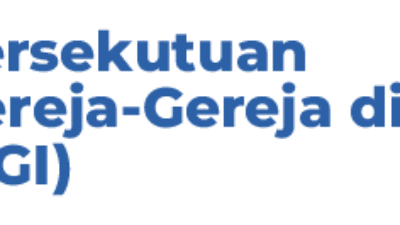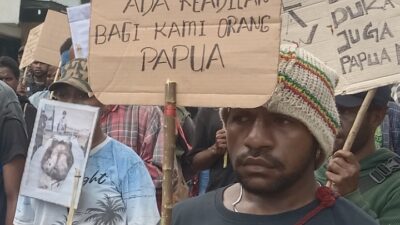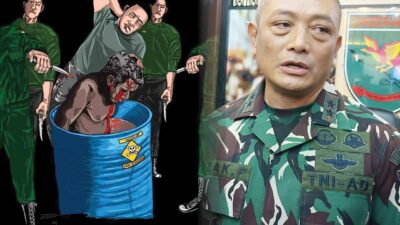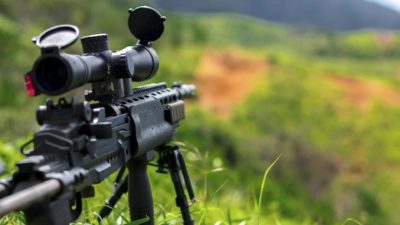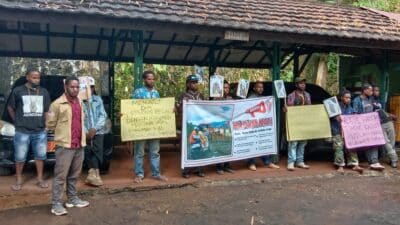Makassar, Jubi – The continued trial of the Bloody Paniai human rights violation in Makassar, presented three expert witnesses on Monday, October 17, 2022. Until this 7th trial, the public prosecutor has presented 27 witnesses, comprising 11 witnesses from the police, 11 witnesses from the Indonesian Military (TNI), and two civilians namely the former Head of East Paniai District and a member of the Papua Legislative Council.
The tragedy that occurred on December 7-8, 2014 killed four Paniai residents and injured ten others.
The trial examined a single suspect, Ma.r (Ret.) Isak Sattu, who at the time served as a Liaison Officer.
One of the expert witnesses presented at Monday’s trial was Agus, a doctor who served as director of Paniai Regional Hospital in 2014. In his testimony, he conducted an examination on 14 victims during the Bloody Paniai incident, including four dead victims.
The examination of the four dead victims was carried out in two different places.
Yulian Yeimo, who died at Paniai General Hospital, was examined on December 8, 2014, a few hours after the riots subsided. Yeimo suffered a gunshot wound to the left abdomen with a 1.1 cm blister. There were no sooty seams and no tattoo seams. This gunshot wound penetrated the right waist measuring 1.2 cm. No metal fragments were found on Yeimo’s body.
Seams are another word for the circular effect of bullet wounds. This is a sign of where the gunpowder from the bullet burned during the shooting. Wounds that show seams will prove how the position of the shot was carried out, whether there was a range of distance, or it was done within only a few centimeters.
Yeimo’s body was not autopsied because the family refused. Anatomically, said Agus, the bullet hit the abdominal organs, such as the intestines, kidneys, liver, and blood vessels in the abdominal cavity. “The cause of death was bleeding in the abdominal cavity,” he said.
Furthermore, on December 11, 2014, shortly before the victim’s funeral was held at the Karel Gobay field, through the local government, residents gave permission to examine the other three bodies. The examination was carried out at the field under a tarpaulin roof and witnessed by several family members of the victims. After the post-mortem, the bodies were buried on the Karel Gobay field near the flagpole.
Three days after death, the bodies began to swell but were still in good condition. According to Agus, the time span of death and the cool air in Paniai kept the corpse in good condition. “It’s a bit swollen, but an external examination can still be done,” he said.
The other three victims are Alpius Gobay, Alpius Your, and Simon Degei. Gobay’s body showed a bullet hole that entered the left abdomen. The circumference of the abrasion measured 1.1 cm. There were no sooty seams and no tattoo seams.
Alpius’ wound penetrated to the right waist with a diameter of 1.2 cm. No metal fragments were found. And anatomically, Alpius died because the bullet hit the abdominal organs, such as the intestines, kidneys, abdominal blood vessels and liver. The diagnosis was bleeding in the abdominal cavity.
Alpius Your suffered a gunshot wound to the left back. There was no wound that showed the bullet coming out, so it did not penetrate. “During the post-mortem, I checked the area of the wound in the back, but I didn’t find anything. Maybe the wound was too deep. As it was probably not penetrated, there might be metal fragments or projectiles left behind, because we did not do autopsies or X-rays on these victims,” said Agus.
Meanwhile, the post-mortem on Simon Degei found a stab wound in the right chest area with a diameter of 3.4 cm x 2.2 cm. The wound model, Agus said, was probably caused by an object with a pointed end, then enlarged to the base. “Maybe like a pointed bamboo model,” he said.
Simon is believed to have died from bleeding in the right chest cavity, which also hit the right lung. His body was found in the right garden near Paniai airport.
The examination was not only carried out on the dead victims. A total of 10 injured survivors were also examined. According to Paniai Regional Hospital records, of those number, one person was only slightly injured and did not require hospitalization. Meanwhile, nine other patients required treatment.
Six victims underwent surgery and four had to receive treatment in the ICU. Agus classified the 10 survivors as having minor, moderate and severe injuries.
Two patients who were severely injured were residents whose bodies were hit by bullets. The first one is Andreas Dogopia. The bullet wound hit his abdomen on the left side, measuring 1.1 cm in diameter. There were no sooty seams and no tattoo seams. The wound penetrated the right abdomen with a diameter of 1.2 cm. This was a penetrating gunshot wound and required major surgery at Paniai General Hospital.
And then there is Yulius Tobai, who suffered a gunshot wound that entered through the left thigh. The wound measured 1.1 cm in diameter and did not penetrate. At the post-mortem the doctor found metal fragments. He also suffered a fracture and had to be hospitalized.
Other victims were Jery Gobai who experienced lacerations, accompanied by abrasions to the right leg. Furthermore, Naok Gobai with a gunshot wound to the right forearm on the front side and a fracture. Oktapianus Gobai suffered an iris wound to the right hand.
Yulian Mote suffered a laceration to the back of the head. Yeremias Kayame suffered a gunshot wound to the left hand. Naftali Neles Gobai, suffered a gunshot wound to the back of the right hand. Aberdanus Bunai, suffered a gunshot wound, to the right thigh and right back side. And Halia Edowai suffered a gunshot wound to the right back which penetrated her palm.
Different metal fragment containers
When the post-mortem team had carried out the examination, the metal fragments obtained from the victims’ bodies were then put in a plastic container and then handed over to the Paniai Regent, Hengki Kayame.
But when the public prosecutor showed the minutes of the examination at the court, Agus did not know about it. “We used to hand it over in a bottle. If it’s a plastic container, I don’t know,” he said. Agus also said he did not know if there was a possible change of container.
Agus heard about the Paniai incident on December 8, 2014 morning. He later learned from hospital staff that the protest at Gunung Merah Pondok Natal at that time was triggered by the alleged beating of residents by the TNI. That night, the victim of the beating was admitted to emergency unit of Paniai Hospital. The doctor who was on duty that night was Yuwelisih Sonya Ganiau.
The victim suffered blunt force trauma and said he was hit. “It was just an ordinary examination. And he went home immediately, not hospitalized,” said Agus. (*)




